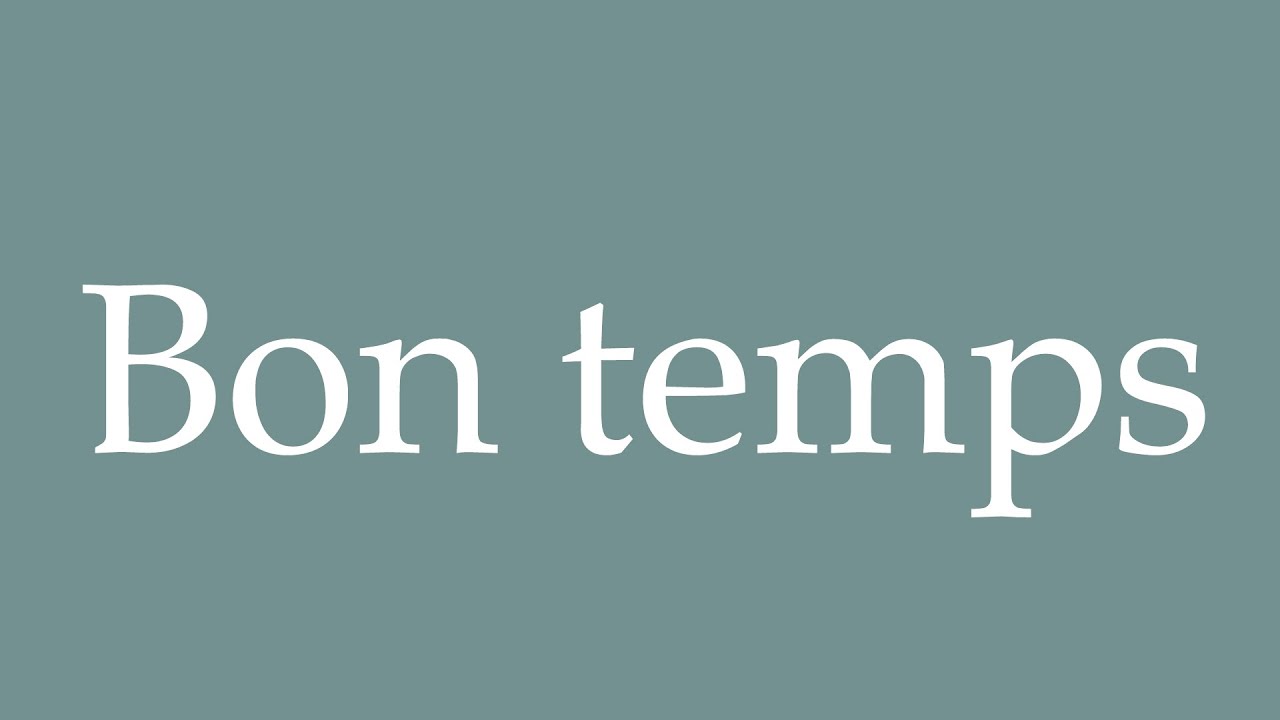Alright, so today I wanted to talk about something I spent a bit of time on recently: getting the pronunciation of “bon temps” right. You hear it a lot, especially in that famous saying, “Laissez les bons temps rouler.” For ages, I kind of mumbled my way through “bon temps” or just, you know, butchered it completely.

My first instinct, like probably a lot of folks who speak English as their main language, was to look at “bon” and think “bahn” and then “temps” and think “temps” with a hard ‘p’ and ‘s’. So it came out sounding like “bahn tempss.” Not great. Honestly, it was a bit embarrassing when I realized how off I was, especially since I like to think I can pick up on these things.
My Process of Actually Learning It
So, I decided I really needed to nail this down. My first step was just listening. I went and found several audio clips of native French speakers saying “bon temps” and also the full “laissez les bons temps rouler.” I must have listened to those clips a dozen times back-to-back.
What I noticed pretty quickly was:
- That ‘n’ in “bon” isn’t the ‘n’ we really hit hard in English. It’s softer, more nasal. My mouth wanted to make a full ‘n’ sound, but I had to consciously pull back.
- The ‘p’ in “temps” is basically silent. My brain sees ‘p’ and wants to say ‘p’, but nope, it’s a trap!
- And the ‘s’ at the end of “temps”? Also silent. Completely. That was a big one for me.
So “bon” became less “bahn” and more like “bohn” – but with that nasal quality where the sound resonates more in your sinuses. It’s a weird feeling trying to get that right at first. You almost feel like you’re exaggerating, but then you listen again and realize, nope, that’s actually how it’s supposed to sound.
Then “temps.” Getting rid of that ‘p’ and ‘s’ was key. It ended up sounding more like “tohn” – again, with a nasal vowel sound similar to the one in “bon,” but not exactly the same. The ‘e’ is kind of like the ‘o’ in “tom” but, again, nasalized and the ‘m’ isn’t really pronounced as a hard ‘m’ either. It’s more about the nasal vowel that precedes it.

Practice, practice, practice. That was the next phase. I started saying it out loud. “Bon. Temps.” Slowly at first. Then trying to link them together smoothly. “Bon temps.” I felt a bit silly talking to myself, but it’s the only way. I’d say it, then listen to a recording, then try to adjust. My wife probably thought I was going a bit nuts muttering “bon temps” over and over again in the kitchen.
Where I Am Now
After a fair bit of repetition and really focusing on what my mouth and nose were doing (sounds weird, I know), I think I’ve got it to a point where it sounds pretty decent. It’s not just about knowing the rules, like “silent ‘s’ here, nasal ‘n’ there.” It’s about getting the feel of the sounds. French, I’m learning, is a lot about that flow and the musicality of the words, which is very different from how I usually speak English.
It’s funny how such a seemingly simple two-word phrase can have so many little nuances. But I’m glad I took the time. Now when I hear “laissez les bons temps rouler,” I can at least say the “good times” part with a bit more confidence and, hopefully, a bit more accuracy. It’s these little victories, right?
